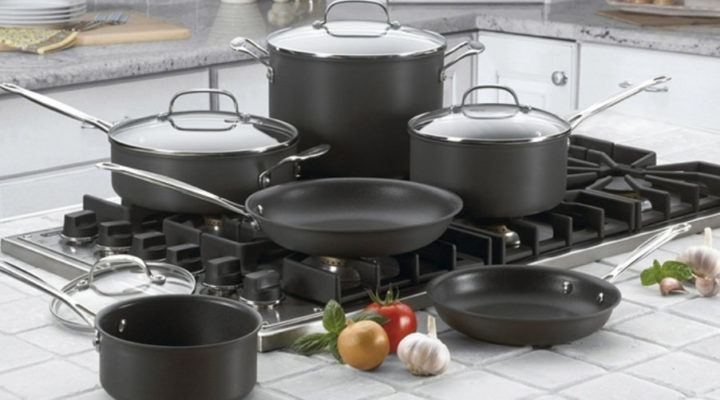
Cookware is an absolute necessity and the idea of owning the best is pretty enticing. But let’s be honest, getting a quality cookware can cost a lot. Furthermore, it’s hard to determine the best in terms of brands, styles, and material. That said, it’s wise to be well-informed in order to make the right choice. Here are some of the top considerations to sharpen your skills on how to select the best cookwares for your kitchen:
Guide For Choosing Best Cookwares For Your Kitchen
Sets vs. Single Pieces
Buying single pieces is more cost-saving in case you need to swap out a damaged pan or pot. It’s also a good route to consider in case you want to add top quality cookware to your stock.
Buying a set provides everything you need at one time. You get matching pieces that fit together and add style to your kitchen. A set is also the better option when switching to a different material.
Number of Pieces
Of course, not all cookware sets have the same number of pieces. The best criteria is to get the highest number possible based on your budget. But in doing so, ensure you get the right sizes and pieces you need without sacrificing quality.
Buying a smaller set is a good move when selecting sizes you’ll typically use. In this case, you can stretch your budget for a higher quality name brand. Take, for instance, a set that includes just 3 pots and pans and one that includes 6 pots and pans. Keeping price tag, material, and size constant, the smaller set offers superior quality.
The number of pieces you choose should be based on the amount of storage you have. Settle for a smaller set if you lack enough cabinet space. Alternatively, you can buy a larger set but with lids designed to fit more than one piece.
Cooking Level and Style
This is all about your need, cooking skill, and kitchen habit. Take time to figure out what you cook frequently. This will influence the type of cookware material. For instance, those that sear meat often will do good with uncoated stainless steel since it facilitates even browning.
Stainless steel cookware set isn’t a good idea for someone who’s new to cooking, especially when cooking fried or scrambled eggs. Copper is also a bit tricky for starters. It tends to impart bitterness on certain foods, such as creamy sauces, and tomato sauces.
Cookware Sizes
Settle for basic sizes that your kitchen needs for daily cooking. Consider specialty sizes for pieces, such as woks, crepe pans, and bakeware. The number of people to be served, especially in a family, is also a major consideration for selecting the right cookware size. For instance, you need to go big for large families or parties.
Cookware Material
Cookwares come in different materials each with its own advantages and drawbacks. Cookware materials vary based on durability, heat conductivity, and food reactivity.
Stainless steel accepts all foods since it’s nonreactive. It’s heavy, durable, and dishwasher safe. However, it tends to have poor heat transfer and distribution. If you must go for stainless steel, select one with added inner core material like aluminum or copper to improve heat conductivity.
Copper has excellent thermal conductivity but tends to react with acidic or alkaline foods. To avoid this, choose copper cookware with stainless or tin lining.
Aluminum is lightweight, affordable, and with excellent thermal conductivity. But like copper, it’s highly reactive to acidic and alkaline foods. To get the best in aluminum, settle for anodized aluminum.
Cast Iron is naturally non-stick when properly seasoned. It’s durable, inexpensive, and with excellent heat retention and distribution. However, it reacts with acidic foods, takes longer to heat, and a bit tricky to clean.
Ceramic is non-stick, chemical-free, and eco-friendly. It’s sturdier, durable, and withstands much higher temperatures.
Non-stick cookwares are convenient, affordable, and cook with less oils or fats. But when overheated, it tends to lose the coating that’s considered toxic.
Stove Type
The type of stove you have will influence the type of material and shape of cookware. Induction stoves, for instance, accept magnetic cookwares with flat bottoms. Glass top stoves need fairly heavy cookware with the flat bottom. Cookware for glass top stoves shouldn’t have ridges.
Final Words
There’s an overwhelming number of cookwares out there to choose ranging from the affordable, expensive, to the outrageous. Your need, quality, and budget should be the top priorities for choosing the best cookware. These are affected by the different factors we’ve discussed above. Now that you know what to look for, selecting the right cookware for your kitchen shouldn’t give you a difficult time.
Leave a Reply